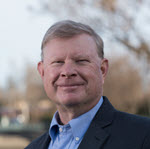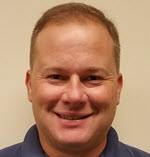

Every Monday from here until the election, the Vanguard will ask all five of the council candidates one question which they have precisely 250 words with which to respond.
Dan Carson, Kelsey Fortune and Bapu Vaitla are vying for District 1 while Gloria Partida and Adam Morrill are squaring off in District 4.
Question 2: The city of Davis must build 930 low and very low-income housing units during the next RHNA cycle ending 2029. Explain your plan for meeting the city’s affordable housing requirements.
 Dan Carson
Dan Carson
The Vanguard question contains a false premise. Our city is not obligated under the state’s fair share housing law to build a single unit of housing. We ARE obligated to ensure that enough land is appropriately zoned and available for housing in our community.
The city will fully comply with RHNA by rezoning identified parcels around Davis by 2024. After months of delay, state housing regulators are just fine with the city’s plans to do so. I am especially glad that they have embraced our new downtown plan and its 1,000 housing units for 2,200 people.
The real question is how can the city meet its moral and economic obligation to make sure we meet the housing needs of our community in addition to hundreds of affordable housing units built recently or underway?
we meet the housing needs of our community in addition to hundreds of affordable housing units built recently or underway?
Our city’s draft Housing Element goes beyond the state’s RHNA complicated scorekeeping exercise with a detailed series of policy initiatives to address our housing needs, including several I shared last year in a white paper that were adopted by my council colleagues.
Here is a small sample: (a) financial incentives to build permanently affordable Accessory Dwelling Units, (b) collaboration with our schools on using their surplus land for teacher and faculty housing, (c) clarifying Measure J/R/D to exempt affordable housing, and (d) asking voters to approve new revenues for our Housing Trust Fund.
Read the entire plan at the website below. It’s a serious and viable effort to provide the additional housing we need.
 Gloria Partida
Gloria Partida
The purpose of the house element is to provide a plan to meet the various levels of future housing needs of a city. The city of Davis has proposed to meet our RHNA numbers by rezoning and upzoning various sites.
By allowing sites currently zoned commercial to be developed for affordable housing and densifying areas zoned less dense, our proposed housing element meets the required numbers. Implementing this plan by actualizing construction of affordable housing, however, is the real challenge.
Our housing element plan does attempt to address this by prioritizing infrastructure for affordable housing and streamlining permitting. While these efforts provide a road map for affordable housing, the feasibility of building still comes down to needing some subsidization of units by local, state, and federal governments.
Luckily both the state and federal government have begun to join in the conversation around finding solutions to our housing shortage especially our affordable housing shortage.
For our city, I am in favor of exploring a housing trust fund to produce funding support of for-sale housing as well as to support assurance for voucher programs. I would also like to explore converting older apartment units into affordable housing either by city purchase in partnership with county support or as a requirement of new development.
Finally, due to AB1505 which imposes parameters such as a feasibility study to ensure inclusionary housing does not constrain housing development, it is important to have our feasibility study currently in process through Cascadia completed. Knowing what is feasibly possible gives us a starting point to work out solutions.
 Bapu Vaitla
Bapu Vaitla
First, I will work to pass a permanent and strong affordable housing ordinance. A temporary ordinance has been in place since February 2018. City Council struggles to push developers to build affordable units when we ourselves don’t know whether and how the requirements will change. I will support the highest inclusionary percentages that a rigorous analysis shows are feasible, and will incentivize the building of affordable units by increasing in-lieu fees to match the cost of unit construction.
Second, I will focus on building environmentally friendly infill housing in and near the downtown core by increasing density bonuses, reducing or eliminating parking minimums, fast-tracking permitting for developments with a high affordable percentage, upzoning to allow modest increases in density and height, and facilitating the construction of accessory dwelling units (ADUs). An infill-focused strategy will help us conserve open space, habitat, and agricultural land.
Third, I will create more competitive development markets by leveling the information playing field between the City and developers. A publicly transparent cost of development calculator, similar to that built by UC Berkeley’s Terner Center but adapted specifically for Davis, would bolster the City’s ability to negotiate stronger baseline standards for affordable numbers and mixes so that developers don’t renege on their commitments.
Fourth, I will prioritize a General Plan update. A clear vision of what we want our community to look like will attract the kind of developers—including non-profit, affordable-focused, and co-housing developers—that fit our values of equity and sustainability.
 Adam Morrill
Adam Morrill
Clearly our current City Council is not seriously concerned with satisfying this requirement as evidenced by their united support for Measure H in which they allowed the developer to meet only the reduced requirements of the temporary interim Affordable Housing Ordinance. The number of low-income units proposed would not have even made a dent in providing affordable housing for the anticipated employees at DISC.
First we need to update the City’s General Plan with significant community input. As part of an updated General Plan, any development on the periphery should have a minimum of 20%+ of any housing being designated for low and very low-income housing with a combination of both rental and for purchase units. Additionally, to ensure that the housing will be built, the city must not accept developer in lieu fees for any portion of the affordable housing requirements.
Further, the majority of the remaining housing units should consist of town homes and condos that are designed and built so they are affordable for local families and work force first time home buyers. We need to take care of our teachers, our lower paid City employees, and our local service workers. Finally, the CC&Rs should stipulate they must remain owner occupied to reduce the loss of homes to investors placing the homes on the rental market at inflated prices.
 Kelsey Fortune
Kelsey Fortune
The city is in an unfortunate situation when it comes to affordable housing because of previous council decisions to allow developments to meet the city requirements in ways that do not count toward RHNA standards, repeatedly renewing an interim affordable housing ordinance that only requires 15%, and continuing to require an arduous and costly process to create affordable housing in our city.
To address the first and second issues, the council must reject the interim affordable housing ordinance in favor of a long-term ordinance requiring 30% dedicated affordable housing with at least 10% very low income and an additional 10% low income. The city must also work with developer and nonprofit partners to secure outside funding to create additional affordable housing opportunities outside of these requirements.
The Downtown Plan and a new General Plan are two large pieces of addressing the third issue. My opponents both supported Measure H which only built 85 affordable housing units while creating demand for over 2,000 new employees. This would have made the housing affordability in Davis worse. The city has favored ad hoc proposals like Measure H instead of prioritizing planning.
We can do this. We can choose not to settle for developer scraps. If we set strong standards, have reasonable, high goals, and work together, we can achieve them. There has to be an appetite for doing better, and that is what I bring to council.

Good article/post…
If I resided in District 1, I’d have made my decision as to who to cast my ballot for… but I do not reside in that district…
If we still had city-wide elections for CC, I’d know how I would cast my ballot… but that ship has sailed, train left the station… c’est dommage, but it is what it is…
As a resident of District 4, I’ll be fine with the outcome between the two candidates… still haven’t decided… and I’ve met with, and have had good conversations with both…
I find strong agreements with both candidates, different issues, and find moderate/strong dissonances with each, other issues… coin flip may pay a role…
I find the answers of all five candidates to the first two questions posed on the VG, ‘enlightening’… in part because of the waffle words, bromides, used by some. Trying to be all things to all people, as it were?
I’ll be looking for ‘concreteness’, not “waffle words”/bromides from the two I get to vote for… so far, they both are doing reasonably good by that metric. I hope they continue…
I also hope (perhaps foolishly) that despite the “district thing”, that all CC electeds focus on the needs/desires of the entire community… silly me… a principle that I felt I brought to “public service”, but in the current condition of local, State, and Federal ‘service’ (do they ‘serve’, or do they want to ‘service’… [ag term, and those who understand ‘animal husbandry’ will understand]), not so much…
We’ll see… but, if you are eligible, and don’t vote, don’t ‘cry to me, Republic of Davis’